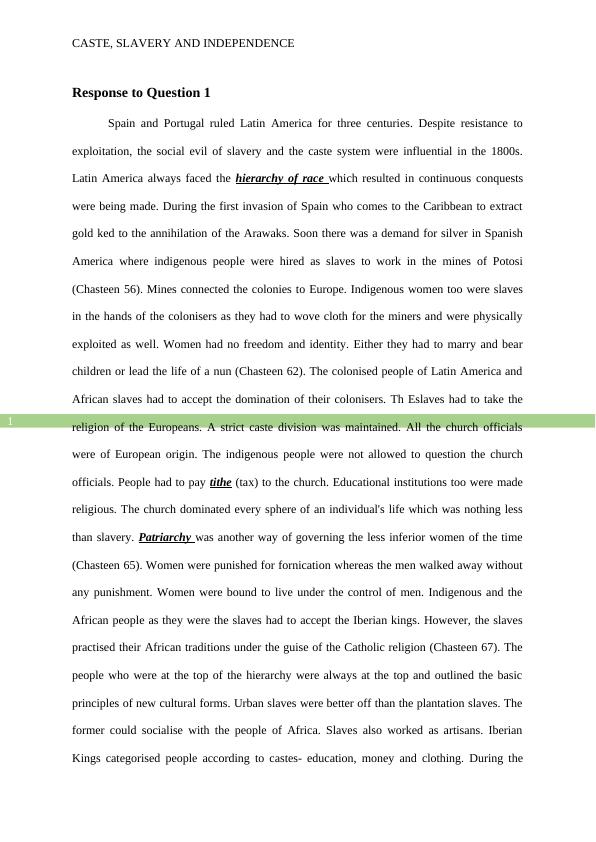Caste, Slavery and Independence | Assignment
Added on 2022-08-23
5 Pages1019 Words17 Views
End of preview
Want to access all the pages? Upload your documents or become a member.
History of Latin America and Its Overview
|5
|833
|9
History of Latin America | Assignment
|6
|1369
|15
History Homework - Latin America and Mexican Revolution
|8
|1101
|377
Assignment | Reconstruction or the civil rights
|9
|1985
|24
Attitudes Towards African Americans, Women, and Indians in American History
|4
|604
|423

